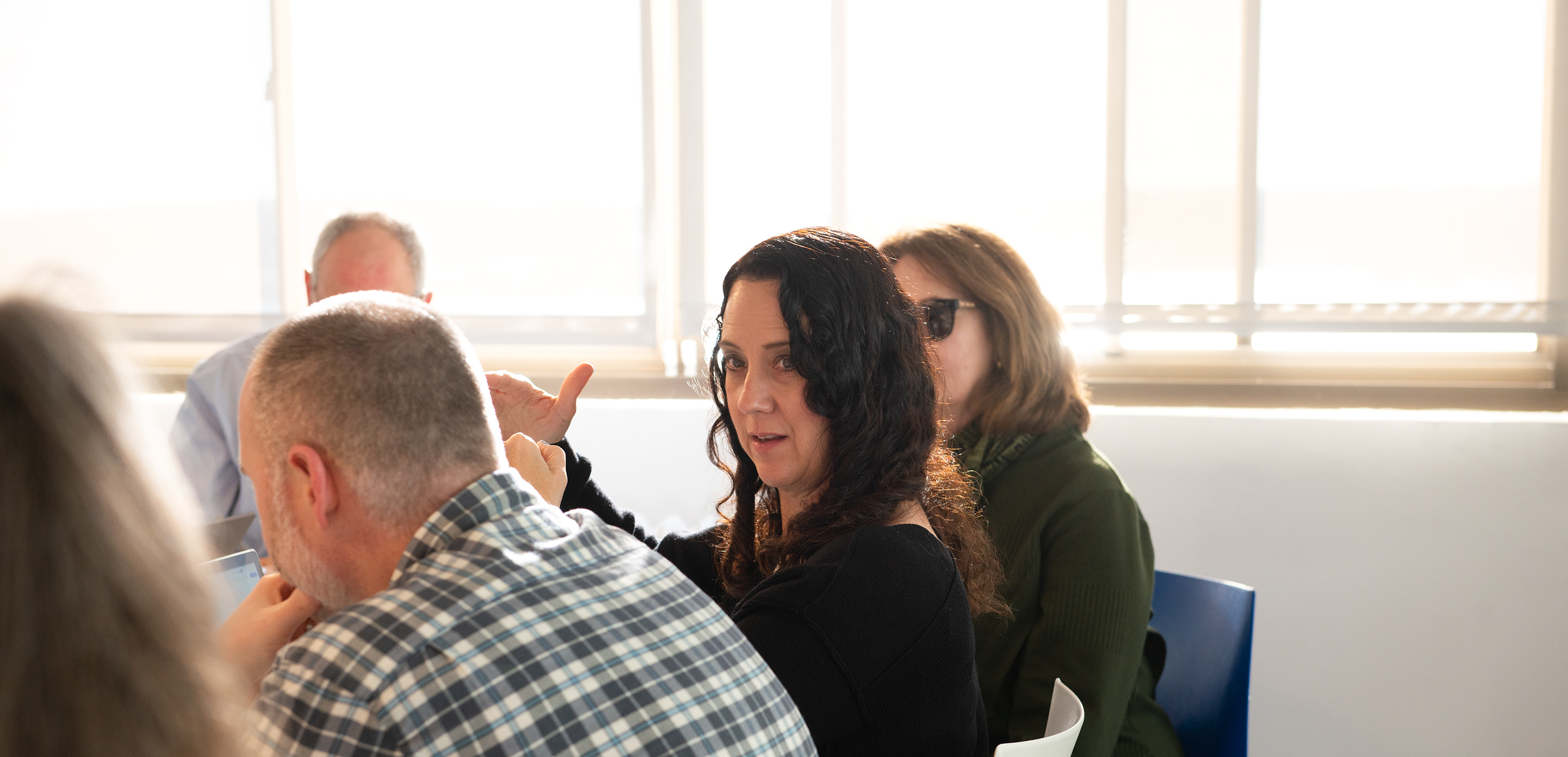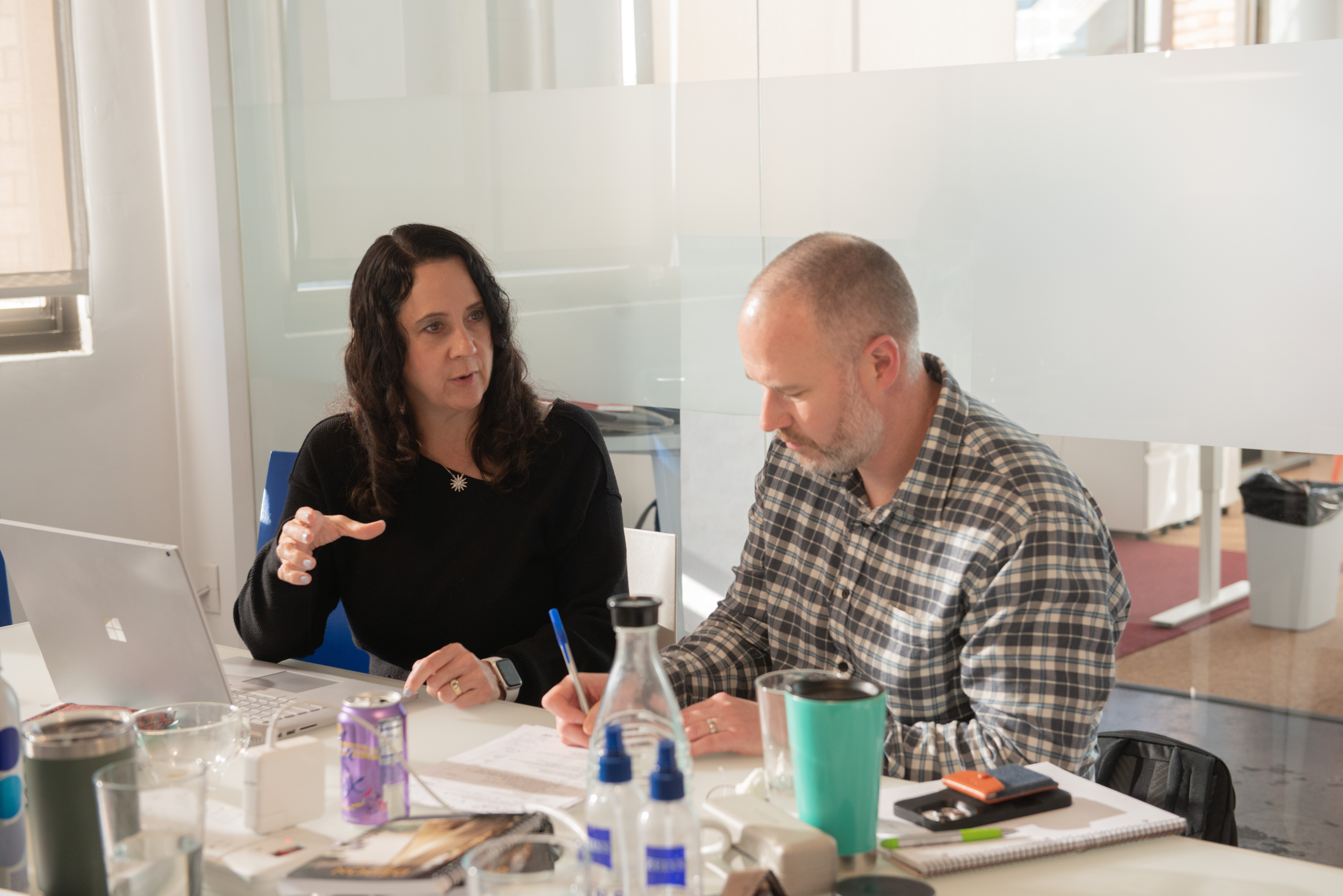
This week, I talk to Belinda Kindschi about how her large, distributed organization of 400 employees stays close and connected. We talk about the processes that they started during Covid, that they still find useful today. And about how she navigates uncertainty.
Belinda has worked at Service Alternatives for 33 years, and been the CEO for nine years. Located in Washington State, they’re a human services company that provides, in their words, “the tools and support all people need to live their best lives.” She’s been in a peer mentoring group for 7 years.
What follows are excerpts from our conversation.
On how to embed values within a distributed workforce
We do a lot to help employees understand what the values are. We expose people to our values right in the interview process. Then it really gets started when they go through new employee orientation. Do they have the values memorized? There are seven of them. Do they understand their core definition? We have short versions, medium versions, and long versions of definitions. We have quotes.
We use our values in a variety of different ways. We embed those values in our work. We’ve got values posters in our offices. We have values wallpaper on our computers. Every month, we have a Service Alternatives value award recipient. We have a value of the month where material goes out to all employees about it. And co-workers are encouraged to nominate other co-workers for representing those values in their work.
We do many, many things to help employees understand them. And then we really encourage leaders to work with their employees to give examples of things like, what we mean by “community.” So, when we say, “that was a fantastic interaction you had with that client, with getting them connected to these services,” they know what we mean by that.
There are tools that we use with employees, and tools we use with our leaders to help people embody them to the best that they can and apply them to the work.
Our work is very person-centered — not person-centered to the employee, but person-centered to the client. And so we want employees to understand those values well enough that whether they’re working with an individual or a family or an organization, they take and apply those values to their work and they use them as a compass. I would say it’s not a single approach; it’s done in a variety of ways.
 On how she navigates uncertainty
On how she navigates uncertainty
When I am facing something that’s uncertain, I go to planning. I’m a big planner, personally. I’m a big planner, professionally. And during Covid, we had lots of plans.
We actually had an initial plan, as an organization, called “Start, Stop, Continue,” which we had in place within the first week or two of Covid. What are we going to start doing? What are we going to stop doing? And what are we going to continue doing? That was a plan that lasted through probably the first year and a half. And then we had a plan called “Leading Through and Out of Covid.” And those plans were involved, tied to supporting our workforce, supporting our culture, supporting our systems, obviously supporting our clients, and getting through this.
For me, a plan is really a form of resilience, because it gives me clarity of what I’m going toward. It served us well as an organization. And those plans and that level of detail does not have to last forever. There’s a time for things and a season for things. And then I shift my approach. So for me, making a plan is just the first thing that comes to mind.
Beyond that, I focused a lot on self-care. For me, it’s exercise and drinking water and sleeping — the basics. But the basics for most of us are where that resilience starts – and recognizing that those self-care pieces really make a difference.
On the processes they started during Covid that they still use
We learned a lot of processes during Covid that we want to hold onto, because they really strengthened our work.
We had an advantage over many organizations because our workforce was already spread out. So we’d figured out some ways to stay close and connected. But we weren’t leveraging a lot of the technology we already knew how to use, to really connect people. Covid spurred us to do that.
What we found was that thinking about connection differently actually encouraged new ways of working. We had 15 case workers across the state, and 12 of them had never met, for example. So we started bringing them together – and it led to them working in new and different ways. We started virtual water coolers, and we still have those in a variety of our meetings that give people an opportunity to warm up with each other, to talk about their weekend or their favorite movie or their favorite book or whatever it might be in order to just establish some sense of connection. We conducted “listen and learn” sessions with our employees to get their feedback on how we were doing as an organization to respond to Covid. And we figured out how to get our trainings done virtually and in engaging ways.
So, the idea for us was to make our organization better in the long run; not just to get through the pandemic. A lot of lessons came from trying to strengthen the distributed culture that we have. It really was a push for us to strengthen systems, and think about our work differently. We learned a lot about systems, and about resilience.
Belinda Kindschi is CEO of Service Alternatives, which supports people all over the state of Washington. In their words, “Service Alternatives is a one-of-a-kind human services organization that makes a difference by advancing the potential of our communities, customers, and ourselves.” They work with individuals, families, and organizations. For example, they provide therapeutic foster care, and help adults with intellectual/ developmental disabilities to live and work in their communities. They also run The Service Alternatives Training institute which is “aligned with Service Alternatives’ vision, mission, and values” and which provides training throughout the United States and New Zealand. Belinda is a member of our King County group.